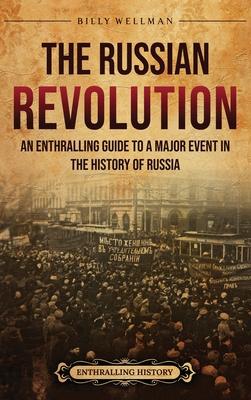Are you curious to learn what set Russia on its present-day course?
The Russian Revolution is a perfect example of how history can contract and become exceedingly dense and complex. Untangling the Russian Revolution (in fact, Russian revolutions) must start by considering events that happened centuries before February 1917. Only in this way can we understand the multitude of events compressed into the short months of the decisive year 1917.
The Russian Revolution, apart from the Chinese Revolution, is perhaps the biggest social experiment the world has ever known. Suddenly, millions of people found themselves living in a country led by fervent Marxists who had grand plans not only for their country but also for all humanity.
Finally, the Russian Revolution continues to shape global politics, with modern-day Russia built directly on the ruins of the great Communist revolution.
In this book, we'll talk about:
- The early days of the Russian Empire, the legendary Ruriks, and how Russians accepted Christianity.
- Tentative attempts at changing the autocratic nature of the Russian government in the 19th century.
- The radicalization of social movements, personified in the typical anarchist, Sergey Nechaev.
- Bloody precursors of the Russian Revolution, such as the assassination of Emperor Alexander II by anarchists.
- The inert and anachronistic Nicholas II Romanov who unwittingly contributed to his empire's downfall.
- Fervent, feverous, and audacious Vladimir Lenin who led the revolution toward its radical turn in October 1917.
- The chaos of the Russian Civil War and the birth of war communism and the Red Terror.
- Lenin's sudden shift toward capitalism in the form of the New Economic Policy, a predecessor of China's shift toward capitalism.
- The aftermath of the Revolution: Lenin's sudden illness and the political struggles of his successors.
- The rise of Stalin, who would lead the USSR into its most glorious and horrifying moments.
- And so much more!
